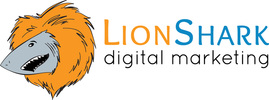Business owners usually want to run ads for all their products instead of being restricted to a few key products or product lines. However, putting together and managing campaigns and ad groups for all your offerings simply doesn’t work (unless you have a very limited lineup of offerings). An approach this broad is time-consuming and ineffective, which is why it typically leads to burnout and wasted ad budget.
Any online advertising expert will tell you that focusing on a subset of products or services is always a better strategy!
So, how do you decide what to advertise online?
Focus your efforts in these five areas:
Margin
High margin products are a great starting place for your PPC efforts because they provide a way to generate measurable revenue quickly. That revenue can then be reinvested into your PPC efforts to promote other products that help to achieve overall business goals like increasing order size or lifetime customer value.
The one drawback to focusing on your highest margin products is that their clicks may be more expensive. More lucrative products often have greater competition, driving up their cost. However, in most cases they’re still worth using as a starting point because they can pay off quickly and provide rich data to aid in your other marketing efforts.
Technology companies are notorious for using this strategy. They’ll advertise only their highest margin products to get the most return on their ad spend because the competition is so steep across their entire lineup of offerings.
Lifetime Value
If you offer any base products that have a lot of complementary products and accessories, these are another important area to focus on with your PPC. Selling the type of products that will keep shoppers coming back to make subsequent purchases is a shrewd way to increase the lifetime value of your customers. It also helps to transform them into brand loyal shoppers, and potentially even brand advocates. In this scenario, your customers start to do the work for your business, adding to your formal online marketing efforts with informal word of mouth advertising. When these forces work together, they generate brand buzz that can spread quickly to boost website traffic and sales.
Children’s brands use this strategy when they advertise things like building blocks or dolls and then market all the add-ons and related products that parents need to buy to create the full toy experience for their kids.
Recurring Revenue
If any of your products or services are subscription-based, advertising them can generate predictable revenue to justify your continued investment in PPC across other product lines. This is especially important for cash-strapped small businesses and startups, who might otherwise have to vary their advertising spend to match their fluctuating cash flow.
Bringing in more recurring revenue is yet another great way to increase the lifetime value of your customers. Subscribers are also more likely to have a brand affinity that’s not easily broken, which can help strengthen your brand image.
Professional services brands advertise their subscriptions because they know that they can make a lot more money by getting customers booked on recurring services than one-time sales. Business of all sizes across all industries from maid services to software providers use this strategy.
Inventory Management
Every business has instances where they have excess inventory laying around that they need to move. PPC is an effective way to clear out old or surplus inventory because you can run ads for the products you’re trying to get rid of until the very moment that it’s gone and then you can shut the ads off immediately. This means no ad spend waste like you’d have if you ran a print ad or did other offline advertising like radio or TV commercials.
Sometimes seasonal businesses will use this strategy to get rid of off-season merchandise, but any company can do this to free up space by clearing out inventory that’s been sitting around for too long.
Competition
Sometimes it’s difficult to determine which of your products are less competitive with paid search. However, if you can find competitive data regarding projected cost-per-clicks or competition level, this is another important focus area. (Google has tools to estimate this for you, but remember that they’re only approximate figures.) Homing in on the products that no one else is clamoring to advertise for can really pay off! It doesn’t matter if the products themselves are lower value products, as long as the return on ad spend (ROAS) is positive.
The savviest companies use this strategy to find the secret places where their company can flourish without being challenged by their competitors! Because this advanced strategy is so effective, many businesses choose to hire a third-party PPC agency to manage their paid search.
Kate Pierce is the owner of LionShark Digital Marketing LLC, a West Michigan internet marketing company. Her areas of expertise include Paid Search, Search Engine Optimization, Business Blogging and Web Copywriting. She lives in the Grand Rapids area with her husband and son and enjoys cooking, watching sports, and spending time together as a family. Like a true digital marketing expert (i.e. geek), she loves talking about current marketing trends… so don’t say you weren’t warned!


 RSS Feed
RSS Feed
